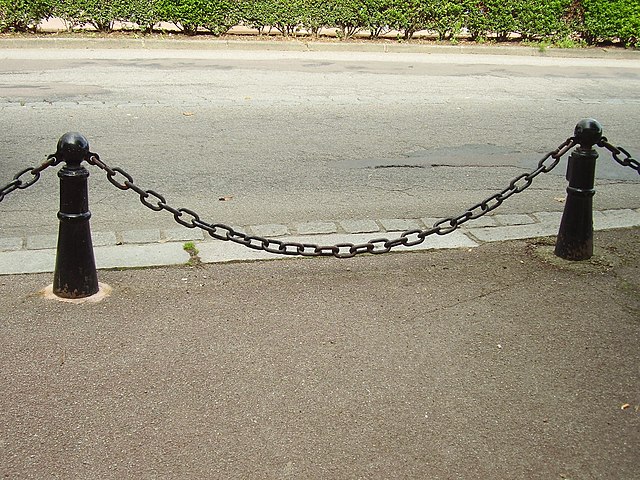Top Qs
Timeline
Chat
Perspective
Weighted catenary
Type of catenary curve From Wikipedia, the free encyclopedia
Remove ads
A weighted catenary (also flattened catenary, was defined by William Rankine as transformed catenary[1] and thus sometimes called Rankine curve[2]) is a catenary curve, but of a special form: while a catenary is the curve formed by a chain under its own weight, a weighted catenary is the curve formed if the chain's weight is not consistent along its length. Formally, a "regular" catenary has the equation

for a given value of a. A weighted catenary has the equation
and now two constants enter: a and b.
Remove ads
Significance

A freestanding catenary arch has a uniform thickness. However, if
- the arch is not of uniform thickness,[3]
- the arch supports more than its own weight,[4]
- or if gravity varies,[5]
it becomes more complex. A weighted catenary is needed.
The aspect ratio of a weighted catenary (or other curve) describes a rectangular frame containing the selected fragment of the curve theoretically continuing to the infinity. [6][7]
Remove ads
Examples
The Gateway Arch in the American city of St. Louis (Missouri) is the most famous example of a weighted catenary.[citation needed]
Simple suspension bridges use weighted catenaries.[7]
References
External links and references
Wikiwand - on
Seamless Wikipedia browsing. On steroids.
Remove ads


